Milton Industrial/Approved School for Boys, Farnborough, Hampshire
In 1898, the National Children's Home transferred its Milton Industrial School for Boys from its original base at Gravesend in Kent to new premises at Alexandra Road, Farnborough. (Its location is sometimes given as North Camp, originally part of the Aldershot Garrison.) The new school's official certification came into force on September 13, 1898, allowing it to accommodate 100 boys aged from 8 to 14 years. Children at an Industrial School were generally placed there by magistrates courts for reasons such as having been found begging or homeless, or frequenting with thieves or prostitutes, or having committed an imprisonable offence while under the age of 12.
The 2.5 acre site included the premises of a former boys' school which were adapted to form the new school's central building. A separate school block was constructed together with other facilities such as workshops, a drill hall, bakery, laundry, store-rooms, and residences for the governor and drill-master. A large playground was provided at the rear of the buildings. The capacity of the school was raised to 150 in April, 1903, following completion of a new block.
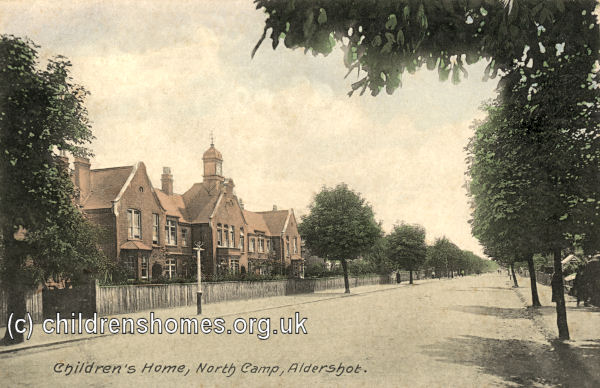
Milton Industrial School for Boys, Farnborough, c.1906. © Peter Higginbotham

Milton Industrial School for Boys, Farnborough, c.1906. © Peter Higginbotham
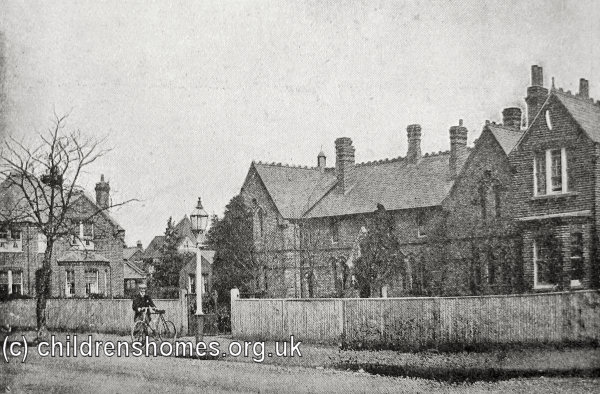
Milton Industrial School for Boys, Farnborough, c.1900. © Peter Higginbotham
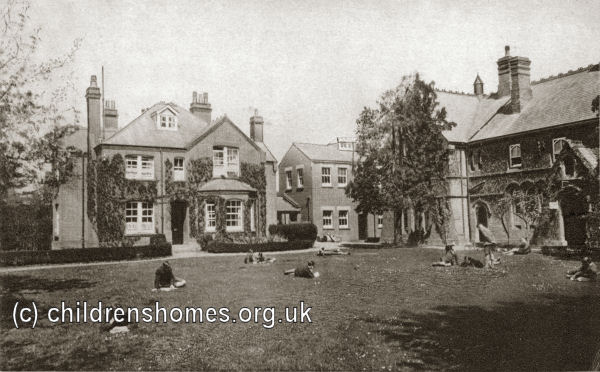
Milton Industrial School for Boys, Farnborough, early 1900s. © Peter Higginbotham
A report on the school in July 1905 recorded that the staff comprised the superintendent and matron (Mr and Mrs H. Tyson), schoolmaster (Mr W.J. Wilson), schoolmistress (Miss Mary Webb), tailor, shoemaker, baker, bandmaster, cook, nurse and two laundresses. Twelve Sisters were in charge of the boys' houses. As regards school work, subjects taken included singing, composition, mental arithmetic, geography and recitation, all of which were noted as being 'fair' 'very fair' or 'good'. In the industrial training department, the boys were taught drawing (criticised for a lack of neatness), tailoring, shoemaking and baking, with fretwork as a 'recreative employment' having been taken up. Physical training and recreation included drill, gymnastics, cricket and football. On the day of the inspection, the boys were 'looking forward keenly to their seaside holiday.'
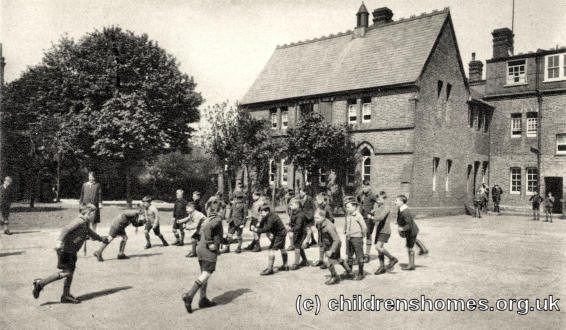
Playground at Milton Industrial School for Boys, Farnborough, c.1906. © Peter Higginbotham
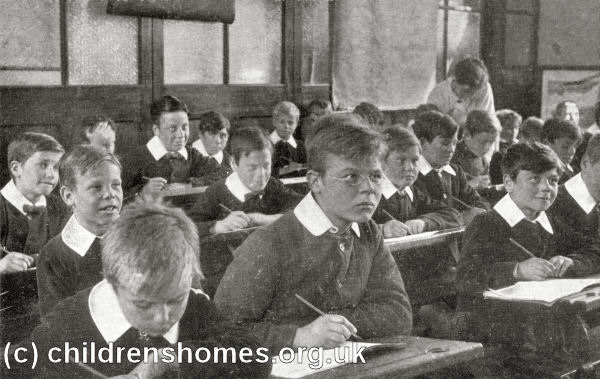
School room at Milton Industrial School for Boys, Farnborough. © Peter Higginbotham
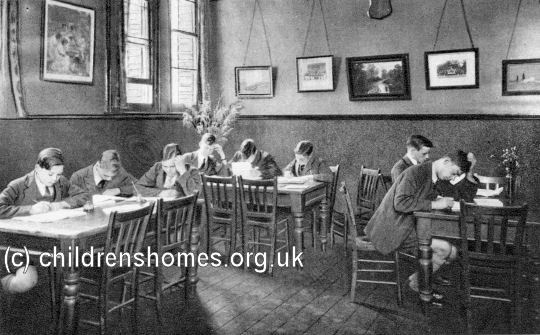
'Home Lessons' at Milton Industrial School, Farnborough, cearly 1900s. © Peter Higginbotham
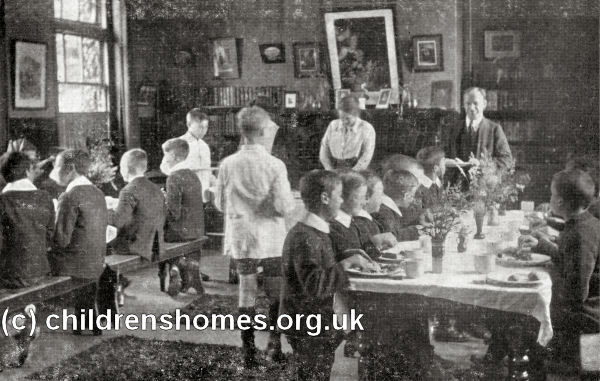
Tea time at Milton Industrial School for Boys, Farnborough. © Peter Higginbotham
The home had its own military-style band. As well as providing a recreation for the boys, it also opened up the possibility of a future career as an army or navy bandsman.
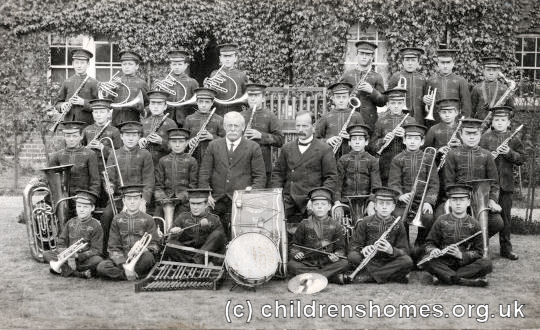
Band at Milton Industrial School, Farnborough, c.1905. © Peter Higginbotham
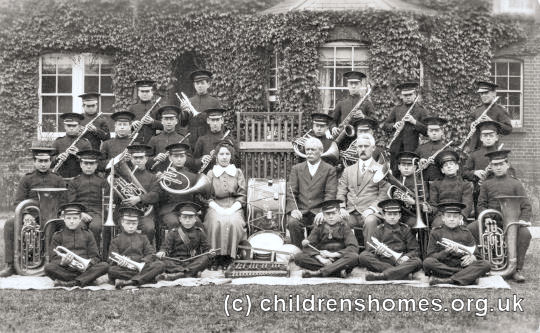
Band at Milton Industrial School, Farnborough, c.1912. © Peter Higginbotham
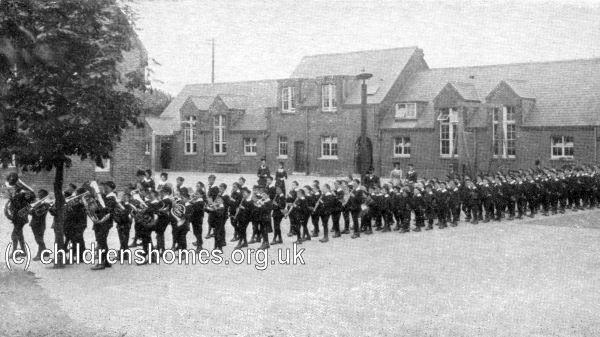
Church parade at Milton Industrial School, Farnborough, cearly 1900s. © Peter Higginbotham
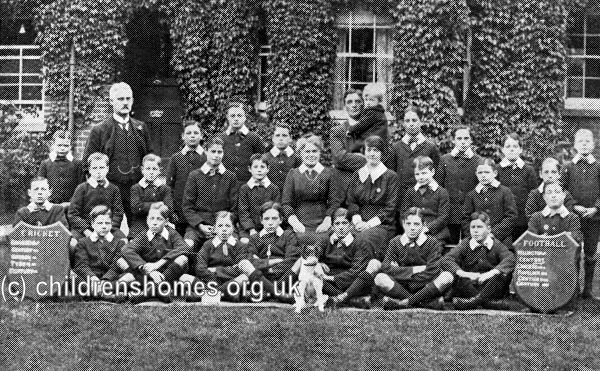
Football and cricket teams at Milton Industrial School, Farnborough, cearly 1900s. © Peter Higginbotham
Following the founding of the Boy Scouts movement in 1908, a troop was formed at the home.
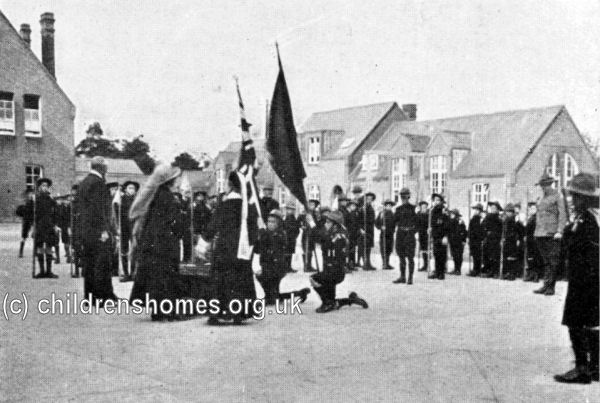
Boys and staff at Boy Scouts receivng their colours at Milton Industrial School, Farnborough, early 1900s. © Peter Higginbotham
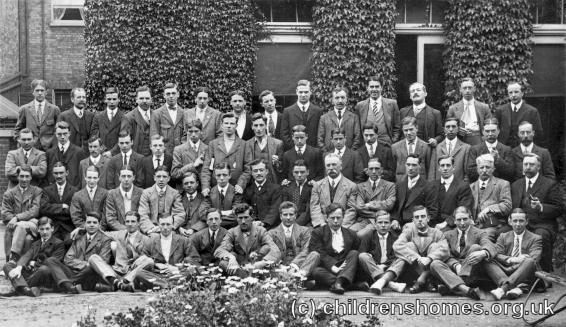
Old Boys and staff at Milton Industrial School, Farnborough, c.1906. © Peter Higginbotham
In around 1934, following the Children and Young Persons Act of 1933, Milton became a Junior Approved School for Boys. It was one of several Approved Schools run by NCH, the others being at Congleton, Carmarthen, Penarth and Seaton in Devon, the latter being for girls.
The establishment's Approved School certificate was formally surrendered on 30 September 1953. The school block was subsequently used as local council offices but no longer exists. The original central block survives, now in residential use
Records
Note: many repositories impose a closure period of up to 100 years for records identifying individuals. Before travelling a long distance, always check that the records you want to consult will be available.
- Action For Children (formerly the National Children's Home). Can provide access to their own records for individuals who were adopted through the charity or who resided in one of its homes. Help also for those searching for family history information.
Bibliography
- Bradfield, William The Life of the Reverend Thomas Bowman Stephenson (1913, Kelly)
- Curnock, Nehemiah The Story of the Children's Home (C.H. Kelly, 1901)
- Higginbotham, Peter Children's Homes: A History of Institutional Care for Britain's Young (2017, Pen & Sword)
- Horner, Francis Shadow and Sun (Epworth Press, 1920)
- Howard, Philip J Philip: a Strange Child (Dalkeith Publishing, 2007)
- Philpot, Terry Action For Children (Lion, 1994)
- Walpole, Cecil F. Golden Links (Epworth Press, 1941)
Links
- Action For Children.
- Their History — a website on the homes by a former resident.
- Growing up in the NCH — a forum for those who spent time in NCH homes.
Films
- Scenes from various NCH Homes — 1960s film footage.
- NCH Documentary (1954) Part 1 — Arriving at Harpenden.
- NCH Documentary (1954) Part 2 — Harpenden Oval.
- NCH Documentary (1954) Part 3 — Annual Convocation, Alverstoke
- NCH Documentary (1954) Part 4 — Special facilities at Danesford, Chipping Norton, Harpenden and Frodsham.
- NCH Documentary (1954) Part 5 — Founders Day at Princess Alice Orphanage; training at Harpenden.
- NCH Documentary (1954) Part 6 — Harpenden.
- NCH Documentray (1964) Part 1 — Disabled and special needs at Harpenden and Chipping Norton
- NCH Documentary (1964) Part 2 — Disabled and special needs children at Harpenden, Edgworth, Chipping Norton.
- NCH Documentary (1964) Part 3 — Harpenden, Edgworth, Chipping Norton.
- NCH Documentary (1964) Part 4 — Alverstoke.
- NCH Documentary (1964) Part 5 — Alverstoke.
- NCH Documentary (1964) Part 6 — Alverstoke.
- NCH Frodsham (1960s) Part 1
- NCH Frodsham (1960s) Part 2
- NCH Brackley (1960s)
- Danesford School (1960s)
Except where indicated, this page () © Peter Higginbotham. Contents may not be reproduced without permission.


